It turns out Victorville had more names than the Upper Mojave Narrows Bridge has incarnations.
The Vanyume Indian name for the area was Cacaumeat, and other names were Mormon Crossing, Huntington (for Heber Huntington, a Mormon pioneer), Rogers Station (for Samuel Rogers), and in 1885, Victor, for Jacob N. Victor, a construction superintendent for the California Pacific Railroad.
The Victor Post Office was established in 1886. The name was changed to Victorville in 1903 to avoid confusion with Victor, Colorado.
One of the most interesting developments of 1889 was the San Bernardino County Supervisors’ decision to construct a bridge across the Mojave River, and the angry debate that ensued over the ideal location.
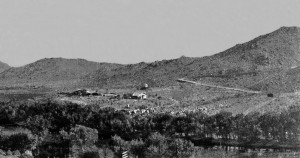
The choice was to be between Victor (today’s Victorville) and Oro Grande, at the lower narrows, or Victor and what would later become Apple Valley, at the upper narrows.
The debate raged on into the early part of 1890, as evidenced by a February 25, 1890, editorial in The Daily Courier, a newspaper out of San Bernardino at the time, that stated, “Gentlemen, it is for you to act; it is for us to criticize in fairness and suggest in a spirit of all-around equity–a spirit actuated by a regard for the taxpayers of the county . . .”
The editorial ended by saying, ” . . . we tell you further, that in the event of your building only one, to locate it at the upper narrows will be more criminal still.”
You guessed it, soon after that article appeared, the decision was made in favor of the upper narrows, and the construction began in earnest. As the bridge approached completion, the board of supervisors, accompanied by respected San Bernardino civil engineer, A.H. Koebig, visited the site, with the latter preparing a report to be issued a week later, to appease the skeptics in the County.
Engineer Koebig pointed out that the bridge would not hold the 1250 pounds per lineal foot specified in the contract. To prove him wrong, the County Supervisors hardly had a choice but to devise a practical test of strength of the bridge.
On the morning of September 26, 1890, as a gentle rain began to fall, and as most of the population of Victor watched, the testing began. A single wagon loaded with rocks, pulled by six mules, went easily across the 300 foot span of the bridge. County Supervisors Johnson and Pope rode on the wagon as well, just to show their faith in the ability of the bridge to hold the weight.
The first part of the test was a success, and now the first wagon went across again, coupled to a second wagon, both loaded with rocks. As the wagons, mules and passengers waited near the end of the bridge, on the east side of the river, a third wagon was brought out.
According to the unnamed Daily Courier newspaper reporter at the scene, before the third wagon made it across to the other wagons, there was a “terrific roar like a clap of thunder, and the pillar supporting one of the (suspension) cables disappeared like magic, sending up a volcano of dust, carrying the support of that side of the bridge away with a crash awful to hear, and instantly sweeping men, mules, wagons, and loads down, down to the river-bed, 50 feet below.”
The news article continues: “What a sight! What a scene? Six human beings hurled 50 feet through the air, amid crashing timbers, huge rocks and struggling animals, their arms outstretched in vain effort to grasp some projecting relief, down, seemingly, an eternity, to the river bed . . .” (Sorry, but we had to add this part. We just love the dramatic way journalists used to write stories).
The reporter continued to observe the scene unfold, and wrote of it, “They stood thus a few seconds helpless, powerless, unable to speak or move, as the torturing scene revealed itself, and then they awoke, it seemed, and from a hundred mouths came the despairing cry of, “Oh, my God! The bridge has gone!”
Built Desert Tough
One of the passengers on one of the doomed wagons that fateful day, sometimes erroneously identified as a wagon driver, was a young boy of unknown age by the name of Austin Ellis. Young Austin survived the plummet to the river below, as did the five others.
According to witnesses, Austin’s leg was broken in three places. He was taken to his home, where he had the presence of mind to tell his mother to “keep quiet,” and that he was “not badly hurt.” Desert people are just made a little differently from everybody else.
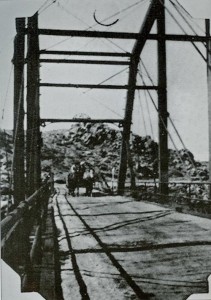
The county Board of Supervisors reported that miraculously there were no fatalities, even to the mules. On September 29, 1890, The Courier, San Bernardino, reported the story under the title of “The Victor Horror”. According to eye witnesses, both mules were killed in the accident, which The San Francisco Call confirmed on October 3, 1890.
A month later, two of the five man county board of supervisors voted to allow the contractor to attempt to rebuild the bridge. The editor at The Daily Courier, San Bernardino, launched a furious attack asserting the citizens should not allow “homicide another opportunity on the Mojave River.”
Play It Again, Sam
The second Victor Bridge, erected in 1891 by Phelps Manufacturing Company of San Francisco, served well for a decade. But in mid-1901, the wooden roadway planking of the structure caught fire, undoubtedly from a passing train, although the railway initially denied it.
The flames destroyed the entire roadway section, to the dismay of a twenty man bucket brigade. Although the damage was less than anticipated, and repairs could be made for under $4,000.


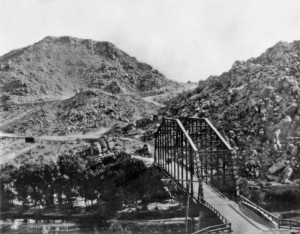


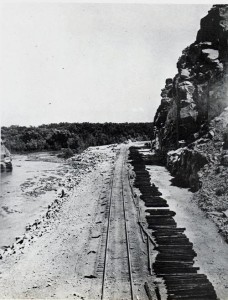
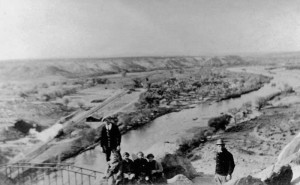
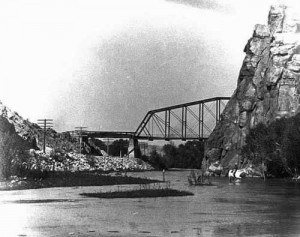

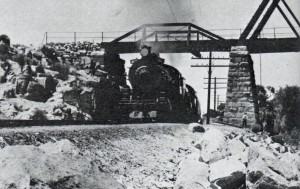
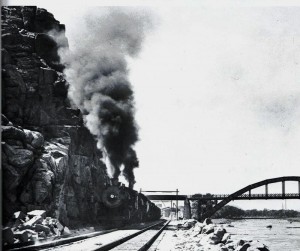
Somewhere Over the Rainbow
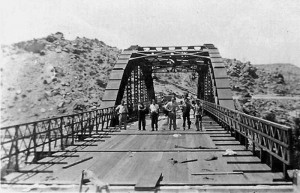

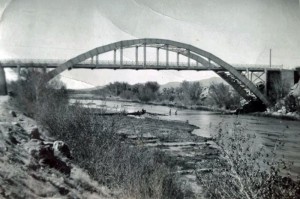

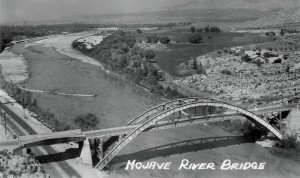

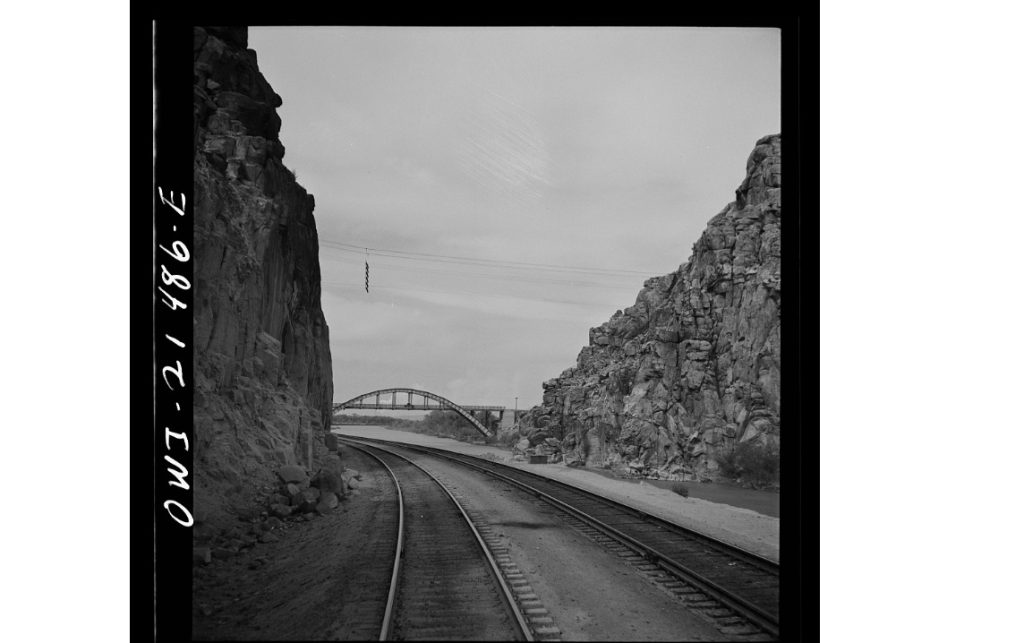
Victorville (vicinity), California. Going through the “narrows” on the Atchison, Topeka and Santa Fe Railroad between Barstow and San Bernardino, California, digital file from original neg. by Delano, Jack, 1914-1997, photographer. Created / Published 1943 March, Library of Congress, no restrictions.

The Upper Narrows bridge and nearby railroad tracks wasn’t the only one to suffer a catastrophe. On September 26, 1946, a Union Pacific passenger train carrying soldiers returning from WWII, derailed near the old iron bridge at the Lower Narrows, two and a half miles from Victorville.
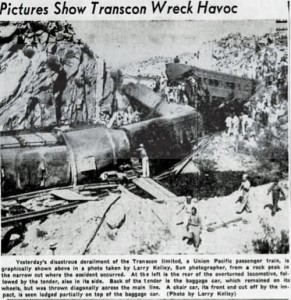
Seven people lost their lives and between 50 and 75 people were injured. Excessive speed was determined to be the causative factor in the accident. It is ironic that servicemen who survived one of the bloodiest wars in history were almost killed on the way back home.
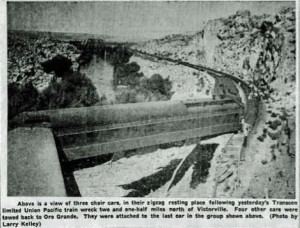
The Upper Mojave Narrows Bridge replaced the 1928 Rainbow Bridge in 1963. Rainbow Bridge remains alongside Highway 18 but is no longer in use. Route 66 is just around “the corner” in Old Town Victorville.
However, it is occasionally used for film projects, such as the Foo Fighters from their 2003 music video “Times Like These.”

This is their music video Times Like These version 2 directed by Marc Klasfeld. Version 1, which depicted a kaleidoscope background, was directed by Liam Lynch.

The music video actually had a total of three versions. The third version was acoustic. Photographs courtesy: RCA Records

The latest Upper Mojave Narrows Bridge continues to connect Highway 18 travelers to Victorville and Apple Valley.
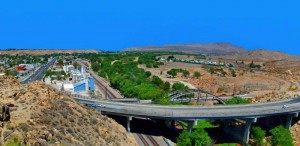
Update: “The remaining buildings on the former Bascom Ranch near Stoddard Wells Road were destroyed in a controlled burn [on 6/02/2018].
The structures were burned as part of a training exercise for Victor Valley College’s 50th Fire Academy students.
A ranch house, barn and several other structures once owned by famed cowboy painter and rodeo champion Earl Bascom were destroyed to bring the property in compliance with City of Victorville codes. The buildings had been repeatedly vandalized over several years.” ~Daily Press

Photo courtesy Google Earth image 8/24/22.
Note: Sometimes people get Mojave Narrows Regional Park confused with the upper Mojave Narrows, but the 886-acre park is actually 10.3 miles away via Apple Valley Road, located at 18000 Yates Road, Victorville, CA 92392. Phone: 760-245-2226. Closed Tuesdays and Wednesdays.
References
https://www.vvdailypress.com/news/20181102/last-bascom-ranch-structures-destroyed

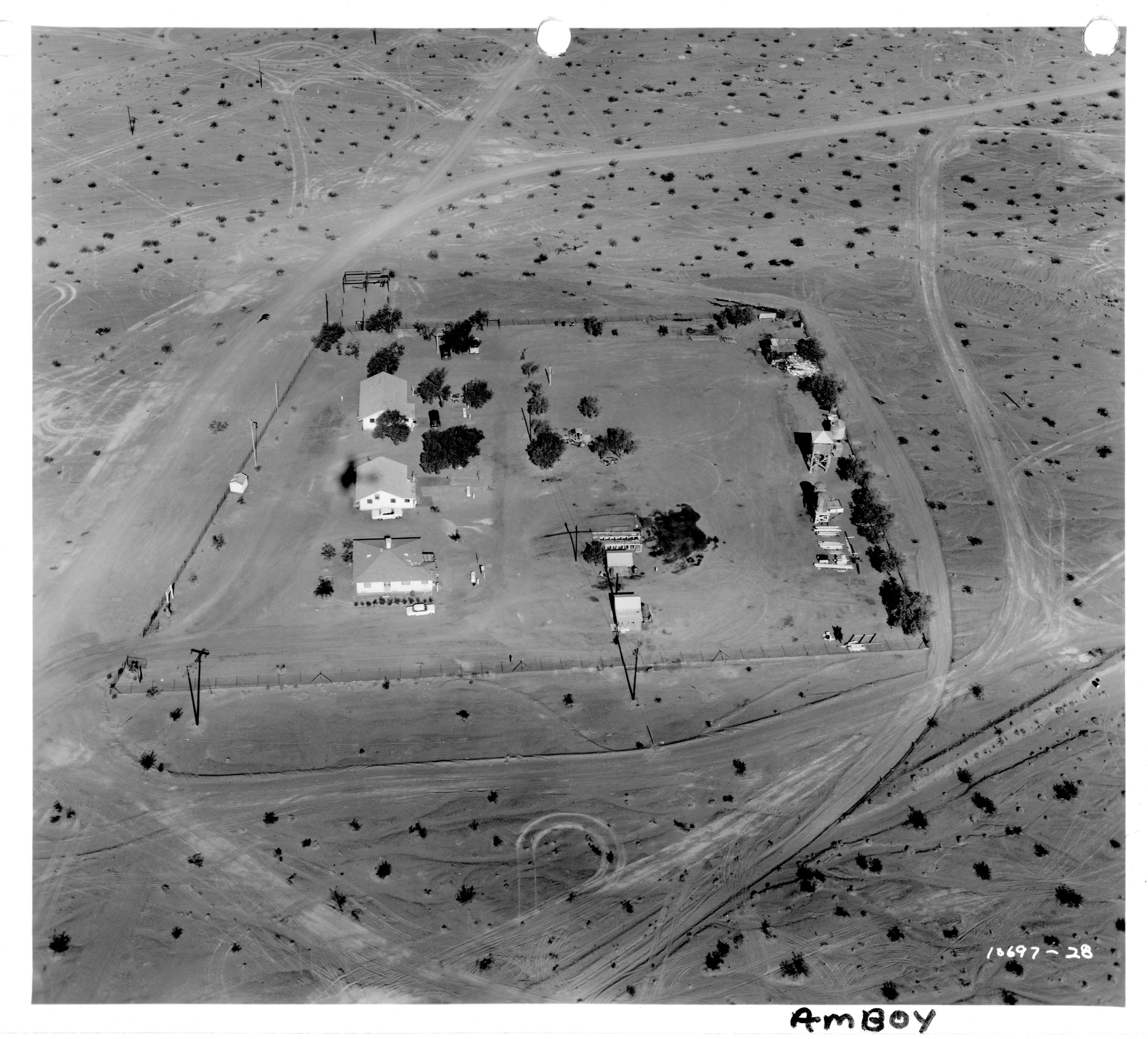
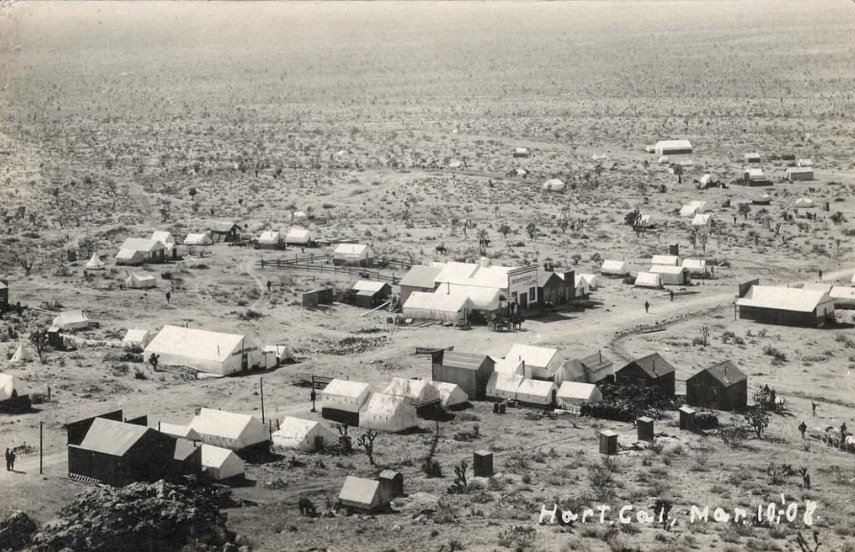


Awesome story..thank you….
Our pleasure, Linda! Thanks for your comments!
Fabulous history of the river’s bridges!!
Thank you very much, Robert! We appreciate your comments.
It’s an amazing story…I’ve lived here since 1987 and seen this place change so much..I have a little bit more respect for it since I’ve been reading all these stories today…thanks again
We’re glad you enjoy the desert’s history. Thanks for your comments.
Well done indeed !
Many thanks for the kudos, Steve. The Mojave Desert sure offers an endless array of rich history.
I love your contribution to our local history! Our new non-profit ICR66 has been created to promote and restore Victorville’s place on Route 66! https://www.facebook.com/reviveoldtown/ We would love you to read our Vision and Proposal and have your endorsement of our endeavor!
Thanks so much, Cliff. We will definitely take your suggestions! We appreciate your comments.
Just love your blog! Love Calico, Ballarat, Death Valley, Geode hunting and dry panning, etc. Thanks for sharing and congrats on the sweet new ride!
Thanks so much for your kind words, Angie!
We’re so glad you enjoy our articles, Angie. Thanks so much for your comments.
Enjoyed the History 😀 – Thank You
Thanks so much, Kirsten!
Curious if anyone knows what was the date of the opening of the Mojave Narrows Park? I am guessing 1972 or 1973? Any pictures from its early years? thanks